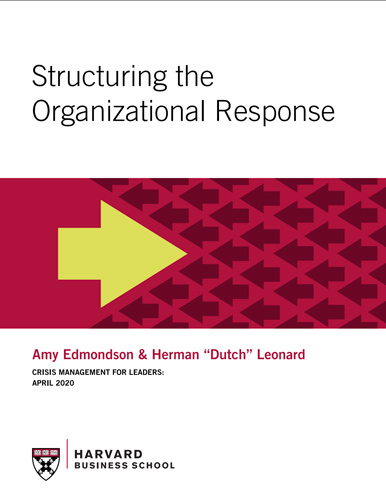Basic ideas for effective webinars during COVID – and an example from Harvard Business School
Your conferences have been cancelled and you have replaced them with virtual events and webinars. Are you getting the engagement and response you are hoping for?
Over the past few months, we have observed and been involved in many webinars. (I’m referring to these events as “webinars,” though they go by many names.) We have attended webinars for business leaders, university administrators, financial advisors, cybersecurity professionals, restaurant owners, and more.
While the country has opened back up, it will still take time before in-person events resume. For now, webinars will remain a critical way to connect, build and sustain relationships, and share ideas.
Based on what we’ve seen, here are 5 tips for webinars during this time.
1. Acknowledge the situation. COVID-19 has affected and is still affecting everything. Yet, we have been on webinars that didn’t even mention COVID. Don’t present or lead a conversation as if the world is the same as in February. Acknowledge COVID-19 by focusing on the implications for your audience.
2. Focus on specific challenges. Audience members want to hear experts talk about specific real-world challenges they are facing. As examples, in the past few months we have heard presenters discuss how:
- IT security pros can ensure security for employees working from home.
- Restaurant owners can ramp up delivery.
- Financial advisors can communicate remotely with anxious customers.
- Manufacturers can safely operate facilities in a COVID-19 world.
- Business owners can preserve cash.
- Product development teams must become more agile during COVID.
Focus on specific challenges that audience members are facing RIGHT NOW.
3. Make it interactive. We have seen webinars use real-time polling with questions like, “How much do you expect revenue to be down in the next six months?” This helps presenters tailor comments. We have also seen select participants be asked to briefly (i.e. 30 seconds) summarize their key challenges. This makes the webinar real and builds credibility and community.
4. Provide practical, actionable solutions.This is the most important tip. It sounds obvious, but often goes overlooked. Some webinars focus on “trends” or “information” or engage in selling.
Our take: at this moment, people don’t want to know about trends or information, and definitely don’t want to be sold. They are giving up 45 or 60 minutes of their precious time to gain practical solutions about their specific problems. (This is always what attendees want from a webinar, but even more so right now.)
5. Follow up. To reiterate your key messages, follow up after the webinar. Send an email recapping key points; provide a link to a replay; post a blog; and/or provide a summary. Keep in mind that attendees are often multi-tasking and 50% who register don’t attend. Reinforce your key points and build relationships by following up.
Example
Harvard Business School offered a series of faculty-led virtual programs on Crisis Management for Leaders. (While designed for alumni, they are available to anyone; we highly recommend them.)
- Acknowledged the magnitude of the COVID-19 crisis for a specific audience (business leaders).
- Focused on specific challenges for this audience—financial, supply chain, and managerial.
- Were interactive, using polls and engaging participants to share perspectives and experiences.
- Provided practical, actionable frameworks, tools, and solutions. Attendees left with specific ideas and actions for their situation.
- Engaged in multiple forms of follow-up including emails, videos posted on a program website, and executive summaries (download an example).
What tips can you share from your webinars during COVID-19? Comment below.
Additional Information
- Check out HBS’s Crisis Management for Leaders.
- See an executive summary from this series.
- Learn more about BullsEye Resources.




Leave A Comment